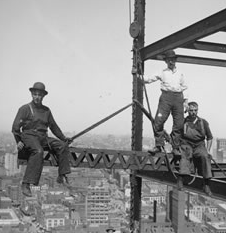Collaborative and Agile?
At CDL, we like to say we are collaborative and innovative by nature, because we were formed in 1997 out of the UC libraries’ tradition of working together to do things that could not be done by a single library alone. It has been a powerful formula over the years. A new question arises, though, in today’s Google-paced environment, whether or not it is possible to be both collaborative and agile.

This is not a trivial debate, because even the academic world is increasingly driven by the speed to market of downloadable apps for laptops and mobile devices. In the agile world…or at least, among the managers of (and consultants to) the tech folks in the agile world…there is some discussion of what is called “management agility.” This heady stuff actually appears to be a code word for infusing business decision-making with just-in-time statistics. The truly agile will adopt decentralized decision-making models, putting the power to make or break the business into the hands of the people who are closest to the work itself.
Running counter to this model is the great momentum toward building services at the network level. In order to do this, CDL–a collaboration itself–has joined with other universities and research institutions in several major network-level super-collaborations, you might call them.
So, this means that we, and our partners, have super-sized collaborative decision-making structures and super-sized strategic planning structures. Sounds more like a recipe for atherosclerosis than agility, doesn’t it?
We don’t have any choice but to face this challenge. We must join together in these network-level initiatives in order to achieve both the economies of scale and the breadth of coverage and vision they afford us. Therefore, we have to seek every opportunity to streamline our collective processes so that we don’t come so late to the party, we’re only in time to pick up the recycling.
Here are some of the things that this means in practice:
- We are working to infuse our collective decision-making with statistics, so that we can make more informed (and, we hope, better) decisions. An example of this is the value-based strategy developed for journal renewal assessment.
- In our network level collaborations, we work to fashion organizations that have mechanisms both for long-range thinking, such as strategic planning, and also short time-frame operational decision-making. An example of this is the governance of HathiTrust.
- And, as we work with these and other efforts, we are now consciously asking ourselves, is there a quicker way to do this? Can a smaller group be deputized to make this decision? Can we fast-tract this inquiry, process, or project?
These are works in progress, and we move forward and then take steps backwards. Sometimes communications break down, or decision-making bogs down. But it is critically important that we are on this path, along with our partners. What other ideas do you have?
